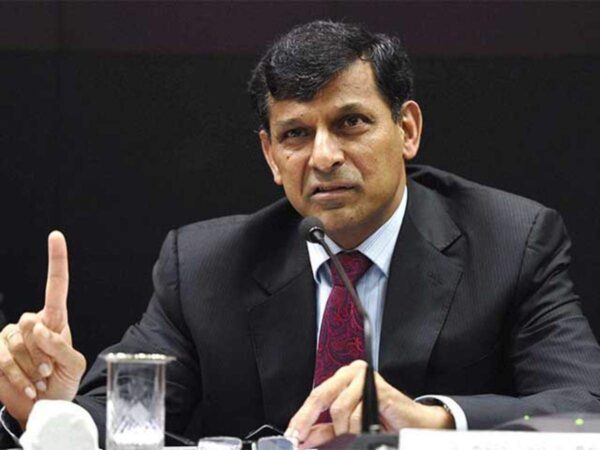What is at the foundation of India’s awful advance issue? The Economic Survey 2020-21 reacts to this in a no limits way. Shorn of language, it nails the fault to “bookkeeping skillful deception” that the Reserve Bank of India (RBI) permitted around 2013-16, extensively matching with the time Raghuram Rajan was the national bank lead representative.
“Early goals of banking emergencies limit the harm from the equivalent to the economy. However, the RBI stalled in doing what needs to be done while endeavoring to convince banks to perceive that the qualification among NPAs and rebuilt resources is only bookkeeping skillful deception. The ensuing outcome was a further worsening of the circumstance,” the study said.
Keep in mind “Lipstick On A Pig?”
This is a return to a comparative diction Rajan had himself utilized in 2013 when he contended against permitting defaulters to rebuild credits.
“You can put lipstick on a pig, however it doesn’t turn into a princess. So sprucing up an advance and indicating it as rebuilt and not provisioning for it when it quits paying, is an issue. Anything which delays an issue than remembering it is to be evaded,” Rajan had said.
Successfully, this implied rebuilt credits were awful advances by another name.
After eight years, the Economic Survey is somewhat scorching on the approaches that Rajan guided that, the review said, just deteriorated the issues of NPAs, shorthand for credits that turn awful.
Boss Economic Adviser Krishnamurthy V Subramanian, who did his PhD from the Chicago Booth School under Rajan’s direction, and his group gives a nitty gritty examination in the Economic Survey, upheld by information and proof, to show how the RBI during that period missed a stunt or two to contain the terrible credit issue before it spiraled into a significant foundational issue.
Getting an advance rebuilt included exchanges with the financiers who had caution in choosing cases for rebuilding. The overview saves no punches, diagonally indicating a potential cooperation between firms’ administrations and investors.
“In a period of loose provisioning standards, firm supervisors officially or casually associated with financiers could convince them to rebuild credits, conceivably even unviable ones. This capacity made the officeholder the executives’ impact more grounded. It got hard for the company’s board to oust such administrators regardless of whether they were generally wasteful,” the review said.
The choice on restraint or permitting impermanent suspension on advance reimbursements brought about an increment in loaning to inefficient firms, prominently alluded to as “zombies”. The overview said portion of new credits to such “zombies” expanded from 5 percent in FY08 to 27 percent in FY15.
The Evergreening Problem
There was another issue: evergreening of credits. This happens when banks loan another advance to a borrower nearly default, close to the reimbursement date of a current advance, to encourage its reimbursement. Such exchanges go undetected as banks are not needed to unveil them, dissimilar to restructurings that warrant divulgences.
The study said a bigger piece of the credit to the modern area during 2008 to 2015 appears to have been utilized to keep dead advances alive by evergreening.
Subramanian and his group likewise descend vigorously on the borrowers’ sheets, bringing up issues on free chiefs and the RBI’s helpless oversight on this issue.
Given that advertisers are the controlling investors in most Indian firms, the non-advertiser chiefs are explicitly needed to maintain the interests of minority investors. They should go about as guard dogs against the probability of firms’ administration enjoying unfortunate practices, for example, seizure of assets or interests in worth annihilating tasks that may by and by profit the advertisers. In this manner, a decrease in the extent of non-advertiser chiefs infers a debilitating of administration among firms.
The overview hurls hard proof to back this.
The level of non-advertisers on the board diminished essentially in the wake of rebuilding during the restraint system (when credit reimbursements were suspended), while it somewhat expanded after rebuilding before patience.
Discoveries show that during the avoidance time frame (I) the presence of autonomous chiefs on loads up declined, (ii) the penchant of a CEO turning into the executive expanded, (iii) having an associated chief on board turned out to be more probable, and (iv) the bank observing declined as a lower number of bank-selected chiefs involved load up seats.
Hard Look At Asset Quality Review
The overview likewise is reproachful of the RBI’s choice in 2015 to lead the alleged Asset Quality Review (AQR). “The RBI chose to take care of business and pulled out administrative avoidance beginning from April 2015. The RBI likewise chose to direct a nitty gritty AQR to know the genuine status of banks’ NPAs”.
Notwithstanding, the study said, the AQR debilitated the issue as it neither ordered capital raising by banks nor gave a capital fence.
The lone notice of the AQR is in the (RBI’s) Financial Stability Report of June 2016, which makes reference to “the gross non-performing progresses (GNPAs) proportion expanded strongly to 7.6 percent from 5.1 percent between September 2015 and March 2016, generally reflecting renaming of rebuilt standard advances as non-performing because of the AQR.”
“Unmistakably, the report gives no insights regarding the presumptions in question or the method continued in the activity,” the study brings up.
It signals the focuses that the RBI may have neglected that prompted mounting terrible advances.
“Abstinence addresses crisis medication that ought to be stopped at the main chance when the economy shows recuperation, not a staple eating regimen that gets proceeded for quite a long time. Additionally, resource quality audit should represent all the inventive manners by which banks can evergreen their advances,” the study said.

